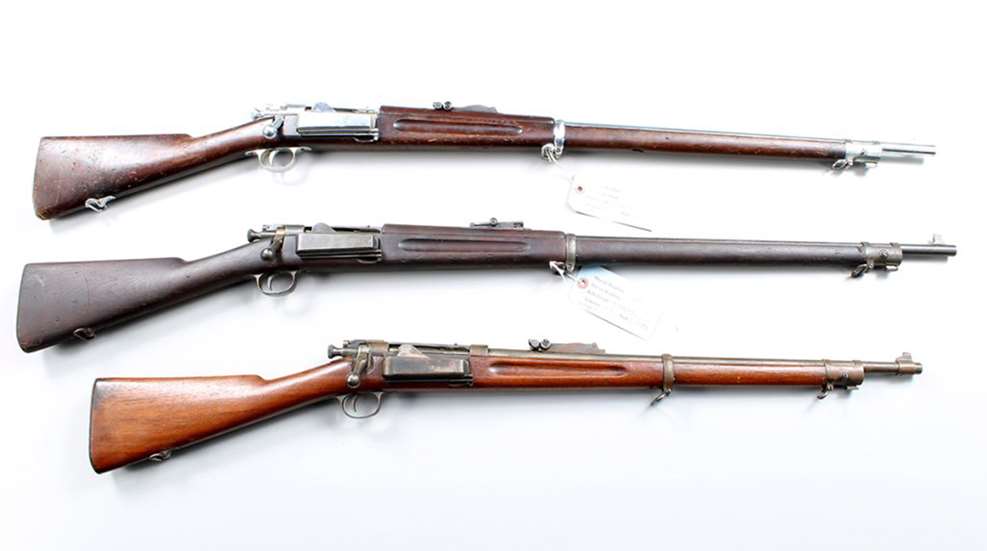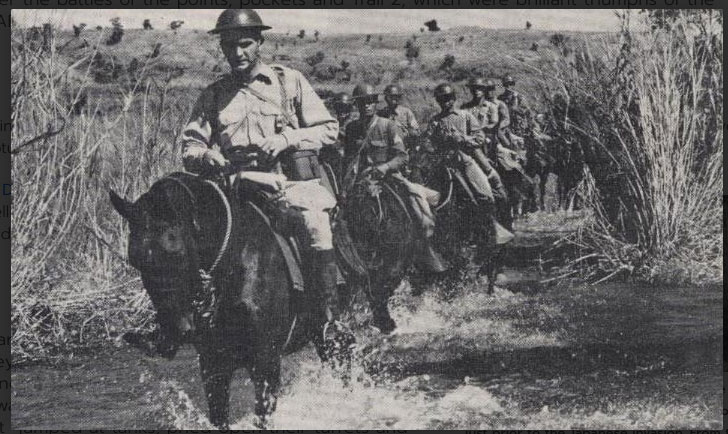 .
. 
Krag-Jørgensen rifles saw limited action in World War II, primarily being used by Norwegian forces before the German occupation, and then by German forces themselves for second-line duties after they occupied Norway. U.S. forces used Krags for security roles domestically in the early years of the war, though the rifle was largely retired from U.S. service before 1917.


I love bolties, unique guns with a long history and this gun meets all three. Replaced by the 1903 this gun saw more action in ww2 than a lot of guns. Americas first modern sniper rifle this gun would fit perfectly in br1. Perhaps with a national guard or other reserve unit this would work well. maybe a large reserve or militia unit with 12 riflemen an no or minimal specialist good for taking or defending a point when you just need bodies. 


The 26th Cavalry Regiment, consisting mainly of Philippine Scouts, was the last U.S. cavalry regiment to engage in horse-mounted warfare. When Troop G encountered Japanese forces at the village of Morong on January 16, 1942, Lieutenant Edwin P. Ramsey ordered the last cavalry charge in American history.
It would not be until October 22, 2001, when American Soldiers would enter combat on horseback again, when members of the 12-man Operational Detachment Alpha 595 (Green Berets), accompanying members of the Afghanistan Northern Alliance, rode into battle at Cōbaki in Balkh Province.
Shortly before the capitulation of U.S. forces in the Philippines, the troopers of the 26th endured the ultimate nightmare of a cavalryman, for with provisions virtually non-existent, the 26th’s beloved mounts were slaughtered to feed Wainwright’s doomed army.

Surviving troopers who stoically recall the deaths of comrades in arms have a hard time holding back tears in describing how they had to shoot the horses. “They shared all our dangers, loving and trusting us as we did with them. There’s a special bond, and we were the last to share it,” reflected a rider of the 26th. 